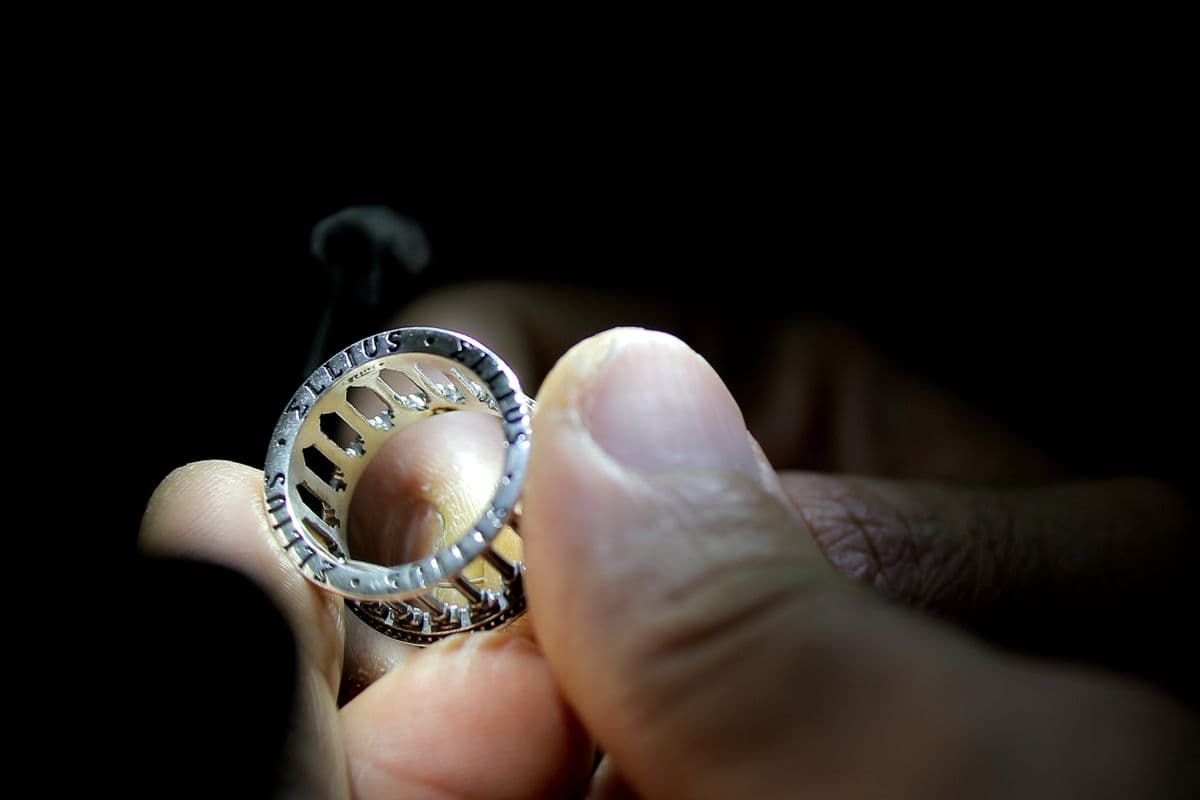Silver is one of the most ductile and malleable materials, which is why it is used in jewellery making.
Often, however, when we buy jewellery in shops or jewellery online, we read the words ‘925 silver’ and probably wonder what it means and why many companies take care to specify it.
925 silver: what does it mean?
Sterling silver is an alloy consisting of silver alloyed with another material, usually copper.
The title indicates the minimum percentage of silver present in the metal alloy. An ingot of pure silver, for example, has a title of 999/1000, i.e., it is 99.9% silver.
There are different titles by which silver is defined, the most commonly used in the manufacture and production of jewellery are: 800, 835 and 925.
So what does 925 silver mean?
Silver 925 is defined as an alloy consisting of 92.5% silver and the remaining 7.5% other material – usually copper. So 925 parts out of 1000 will be silver.
Why is 925 silver alloyed with other materials?
925 silver is alloyed with other materials precisely because of its ductility and softness.
In fact, combining it with materials such as copper, serves to give jewellery and objects in general, greater resistance over time, thus protecting them from the deterioration they inevitably undergo in their use.
925 silver is also recognisable, compared to other titles, by its lustre. In fact, being alloyed to a lesser percentage with other metals, it retains much of its original lustre.
What is the value of silver 925?
The value of 925 silver is certainly higher than that of other titles, e.g. 800 and 835.
The value of silver is determined by the London Stock Exchange, which sets the daily quotation for this material.
The value of 925 silver, therefore, depends on the value of pure silver. As it is an alloy, the percentage of the material present must be subtracted from the price of pure silver, in this case 7.5%.
Jewellery made from silver is marked with a hallmark, which indicates the silver content of the object. Silver alloys and the relative hallmarks in Italy are regulated by Legislative Decree 251/99 of 22 May 1999. The titles are stamped on an oval plate and are followed by a number or city code, which indicates the manufacturer.
There is, however, also another inscription. If inside the oval plate is the letter R enclosed by a rectangle, this means that the object is made of non-precious metal, but covered only with a very thin sheet of silver.
These objects are called ‘silver‘ or ‘silver plated’ and, considering the difficulty in assessing their preciousness, precisely because it is difficult to establish the thickness of the silver, they usually bear a number indicating approximately the grams that have been used to make the jewel.
Knowing how to evaluate and choose a piece of 925 silver jewellery is not easy. There are many items on the market that are made abroad and comply with other regulations or 925 silver jewellery that does not bear the hallmark.
The best thing is to rely on Italian companies, such as Ellius, which uses 925 silver in the production of its jewellery and can give guarantees to its customers by attaching certificates of guarantee and authenticity to each product.
Ellius handcrafts both 925 silver jewellery for men such as rings, bracelets and necklaces and silver jewellery for women such as rings, charms and earrings.
925 silver, as mentioned above, is easily recognisable, thanks to its brightness. The different methods of finishing the jewellery, such as rhodium-plated 925 silver, give it a special brilliance and make it even more durable. However, it is important to take care of your jewellery, which can oxidise and darken over time. To avoid this, it is best to store them carefully and clean silver jewellery properly.

